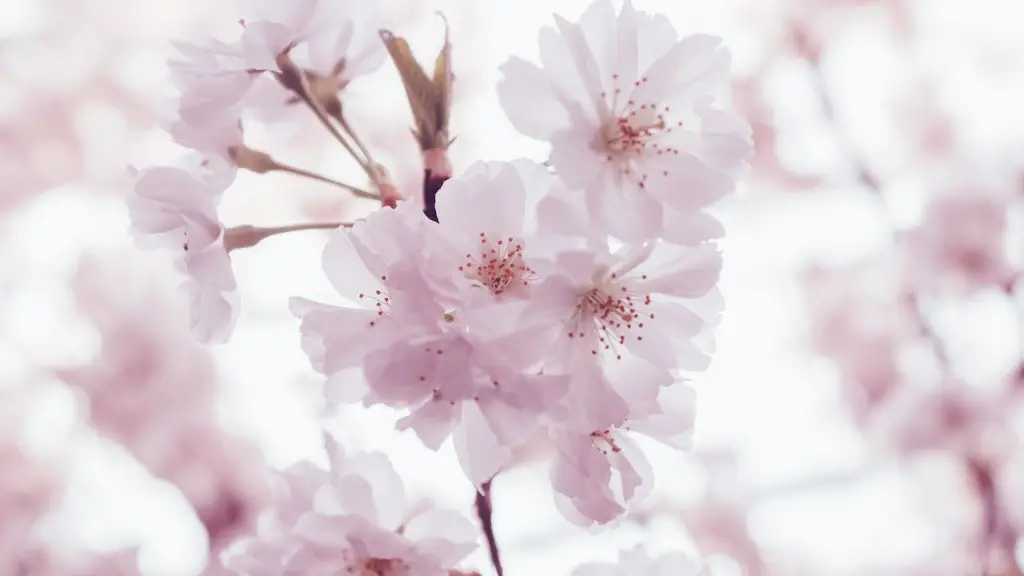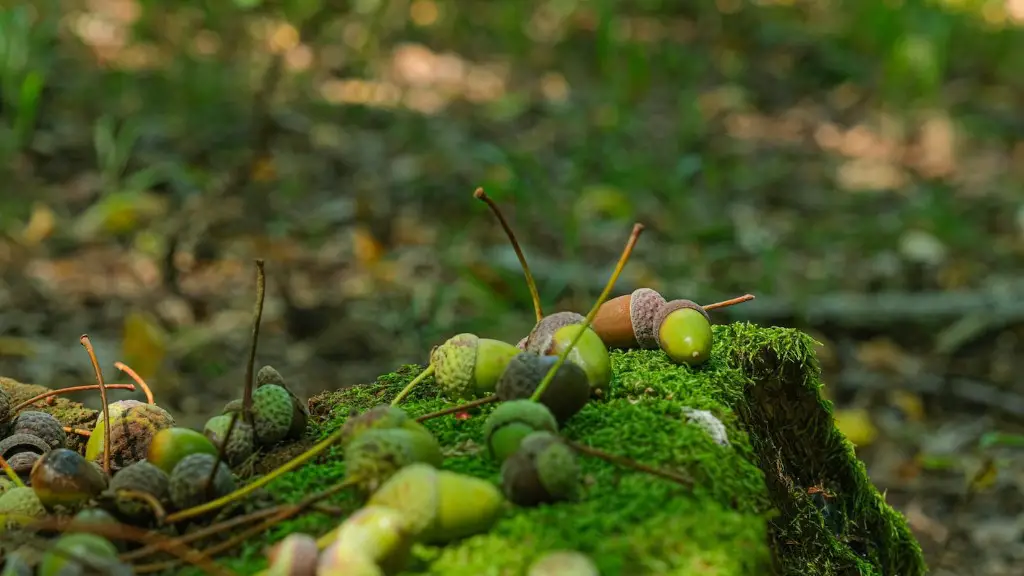The sand cherry tree, or Prunus besseyi, is a species of flowering shrub native to the prairies of the United States. The tree is recognized for its showy white and pink flowers and delicate smell. As its name implies, this species can be found on sandy, well-drained soils, and can often be found growing near the sides of roads, in sandy woodland thickets, and in drier parts of agricultural fields. The sand cherry tree is also a popular garden ornamental for its showy fragrant blooms and its ability to quickly fill in bare spots in a landscape. So, a common question is: how tall does a sand cherry tree get?
The answer will vary depending on the growing conditions, pruning habits, and the health of the tree. Generally speaking, the sand cherry tree reaches heights of 5 to 9 feet, with a spread of 6 to 10 feet. Left untouched and allowed to grow naturally, the trees will reach their maximum height in ten to fifteen years. However, in sunny locations and in prolific areas, they can reach their maximum height in as little as 5 years.
The sand cherry tree can be pruned to manage its size, but it requires careful and regular pruning to keep its shape and size. The tree should be pruned cleanly, cutting back the branches in late winter to the desired size. It is important to avoid pruning too heavily, as this can lead to a weakened plant structure and produce less vibrant blooms.
The sand cherry tree is considered to be low-maintenance, requiring no fertilization and minimal pruning. It does, however, require adequate sunlight and well-drained soils to grow. If the tree is growing in a poorly drained area, it will not reach the maximum possible height. This can be remedied by proper planting, as well as the occasional use of supplemental water during the spring and summer months.
As with all other species of trees, soil type and fertility will greatly affect the growth of the sand cherry tree. The best soil for this species is sandy, well-drained soil with pH ranging between 5.5 and 8.5. Amending the soil before planting with compost, humus or other organic matter is also beneficial.
Overall, the sand cherry tree is a low-maintenance, showy species that can be a great addition to any landscape. Depending on its growing conditions, the tree can reach heights of 5 to 9 feet, requiring some pruning and proper planting to reach its maximum height.
Growth Rate
The sand cherry tree tends to grow quickly in its first four to five years. After that, its growth rate starts to slow down and stabilize. On average, the tree will grow an additional three to five inches in height each year. When planted in an ideal location and cared for properly, the sand cherry tree can reach heights of 8 to 9 feet in its lifetime.
Due to its slow-to-moderate growth rate, it is ideal for smaller spaces or where quick results are desired. It is also suitable for containers and can make a beautiful accent tree or can be pruned for a more formal look.
For those looking for a more rapid-growing option, hybrid varieties such as the Early Sand Cherry or Prairie Fire have been bred to be faster growing, though they do not reach the same heights as the regular sand cherry tree.
The growth rate of the sand cherry tree can also be affected by the amount of sunlight it receives. Trees planted in sunny locations tend to grow slightly faster and healthier than ones planted in shady spots.
Uses
The sand cherry tree is used most often as an ornamental tree due to its showy white and pink blooms and heady fragrance. It is also a favorite of the wildlife. This tree produces edible cherries that are enjoyed by birds and small mammals.
In addition, the sand cherry tree has other uses. Its bark is a source of tanbark and its twigs and buds can be used as fuel. Its timber can also be used for fence posts and tool handles due to its strength and durability.
The sand cherry tree has many benefits. It grows vigorously and is easy to care for. It can quickly fill in bare spots in a landscape, providing year-round interest. In addition, it is resistant to many plant diseases and pests, making it hardier than many other tree species and requiring little attention.
Diseases
Although the sand cherry tree is generally considered to be resistant to many common tree diseases, there are a few problems that can affect it. fungal diseases, such as Botrytis cinerea, have been known to cause leaf spots and blossom blight. The tree can also be affected by bacterial diseases, such as Pseudomonas syringae, which can cause cankers and twig dieback.
It is important to keep the sand cherry tree healthy to reduce its chance of becoming diseased. This means ensuring the tree has enough water, sunlight, and nutrient-rich soils. Planting it in well-draining soil and pruning it regularly also helps to prevent disease.
Fungicides and pesticides can also be used as a preventative measure to protect the sand cherry tree against diseases. However, it is important to research and select the appropriate product for the problem and to read the instructions thoroughly before applying.
Pruning
Pruning the sand cherry tree is important for its health and overall appearance. Pruning should be done when the tree is young, as this will give it a good foundation for a strong structure and abundant blooms.
The tree should be pruned in late winter or early spring when it is still dormant. Pruning at this time of year helps to reduce the risk of fungal diseases developing and also prevents any dead or damaged branches from falling and causing injury.
When pruning, it is important to make clean cuts with sharp shears or a pruning saw. Avoid removing large amounts of live branches and stems, as this will weaken the tree. Instead, remove only the dead, dying, or diseased branches, and thin out any overcrowded areas or sections of the tree.
Wildlife
The sand cherry tree provides food and shelter for a variety of wildlife species. Its beautiful blooms and abundant berries attract birds and hummingbirds, while small mammals, such as squirrels and chipmunks, also benefit from its fruit. The tree also provides shade and shelter for other animals, creating a beneficial ecosystem.
In turn, the animals help to pollinate the tree and spread its seeds, further helping it to spread in the wild. The foliage of this tree also provides shelter for hibernating insects and beneficial predatory insects.
The sand cherry tree is a great choice for creating wildlife habitats in the garden. Not only does it provide food and shelter to a variety of animals, but its bright blooms also offer a visual feast to birds and other wildlife.
Conclusion
The sand cherry tree is an attractive and low-maintenance tree species that can reach heights of 5 to 9 feet. It is easy to care for and requires minimal pruning. However, it should be planted in sandy, well-draining soils and be given sufficient water, sunlight, and fertilizer.
When cared for properly, this showy tree can thrive for many years and will attract a variety of birds and other wildlife species. Not only that, but it can also be used for fuel, tanning and fence posts, making it a great addition to any landscape.





